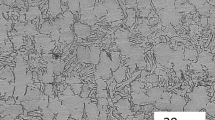Abstract
Polytetrafluoroethylene (PTFE) is a typical material widely used in bearing, gaskets, gears, etc. of many various fields such as aeronautics, astronautics, and military. Traditionally, PTFE is manufactured by molding process, which is suitable for processing of large quantities and standard parts. And a deburring treatment is necessary after molding. For small-scale or special shape products, molding techniques require new molds which need long time period. In contrast, machining method can meet the requirements more efficiently. However, the traditional machining is prone to produce machining defects such as edge fins and burrs. In this paper, a novel and effective method for cryogenic machining is proposed. According to the experiment results, the cryogenic machining can effectively restrain the production of machining defects and subsurface damage layer. And the mechanism of defect suppression in cryogenic machining is revealed by analyzing the change of molecular structure and properties with temperature.









Similar content being viewed by others
References
Natarajan E, Kaviarasan V, Lim WH, Tiang SS, Parasuraman S, Elango S (2019) Non-dominated sorting modified teaching–learning-based optimization for multi-objective machining of polytetrafluoroethylene (PTFE). J Intell Manuf 1-25.
Zheng X, Wen X, Wang W, Gao J, Lin W, Ma L, Yu J (2017) Creep-ratcheting behavior of PTFE gaskets under various temperatures. Polym Test 60:229–235
Kobayashi A, Saito K (1962) On the cutting mechanism of high polymers. J Polym Sci 58:1377–1396
Vlad D, Fetecau C, Doicin C, Palade LI (2013) Experimental study on the cutting forces in PTFE orthogonal cutting. Mat Plast 50:326
Lee K, Dornfeld DA (2005) Micro-burr formation and minimization through process control. Precis Eng 29:246–252
Ervine P, O’Donnell GE, Walsh B (2015) Fundamental investigations into burr formation and damage mechanisms in the micro-milling of a biomedical grade polymer. Mach Sci Technol 19:112–133
Debnath S, Reddy MM, Yi QS (2014) Environmental friendly cutting fluids and cooling techniques in machining: a review. J Clean Prod 83:33–47
Jawahir IS, Attia H, Biermann D, Duflou J, Klocke F, Meyer D, Newman ST, Pusavech F, Putz M, Rech J, Schulze V, Umbrello D (2016) Cryogenic manufacturing processes. CIRP Ann 65:713–736
Shi B, Elsayed A, Damir A, Attia H, M'Saoubi R (2019) A hybrid modeling approach for characterization and simulation of cryogenic machining of Ti–6Al–4V alloy. J Manuf Sci Eng 141:021021
Gill SS, Singh J, Singh H, Singh R (2012) Metallurgical and mechanical characteristics of cryogenically treated tungsten carbide (WC–Co). Int J Adv Manuf Technol 58(1-4):119–131
Koneshlou M, Meshinchi Asl K, Khomamizadeh F (2011) Effect of cryogenic treatment on microstructure, mechanical and wear behaviors of AISI H13 hot work tool steel. Cryogenics 51:55–61
Gu K, Zhang H, Zhao B, Wang J, Zhou Y, Li Z (2013) Effect of cryogenic treatment and aging treatment on the tensile properties and microstructure of Ti–6Al–4V alloy. Mater Sci Eng A 584:170–176
Rae PJ, Brown EN (2005) The properties of poly(tetrafluoroethylene) (PTFE) in tension. Polymer 46:8128–8140
Rae PJ, Dattelbaum DM (2004) The properties of poly(tetrafluoroethylene) (PTFE) in compression. Polymer 45:7615–7625
Hong SY, Ding Y (2001) Cooling approaches and cutting temperatures in cryogenic machining of Ti-6Al-4V. Int J Mach Tools Manuf 41:1417–1437
Bordin A, Sartori S, Bruschi S, Ghiotti A (2017) Experimental investigation on the feasibility of dry and cryogenic machining as sustainable strategies when turning Ti6Al4V produced by additive manufacturing. J Clean Prod 142:4142–4151
Umbrello D (2013) Analysis of the white layers formed during machining of hardened AISI 52100 steel under dry and cryogenic cooling conditions. Int J Adv Manuf Technol 64:633–642
Biček M, Dumont F, Courbon C, Pušavec F, Rech J, Kopač J (2012) Cryogenic machining as an alternative turning process of normalized and hardened AISI 52100 bearing steel. J Mater Process Technol 212:2609–2618
Yang S, Puleo DA, Dillon OW, Jawahir IS (2011) Surface layer modifications in Co-Cr-Mo biomedical alloy from cryogenic burnishing. Procedia Eng 19:383–388
Pu Z, Outeiro JC, Batista AC, Dillon OW Jr, Puleo DA, Jawahir IS (2012) Enhanced surface integrity of AZ31B Mg alloy by cryogenic machining towards improved functional performance of machined components. Int J Mach Tools Manuf 56:17–27
Schoop J, Ambrosy F, Zanger F, Schulze V, Jawahir IS, Balk TJ (2016) Increased surface integrity in porous tungsten from cryogenic machining with cermet cutting tool. Mater Manuf Process 31:823–831
**a T, Kaynak Y, Arvin C, Jawahir IS (2016) Cryogenic cooling-induced process performance and surface integrity in drilling CFRP composite material. Int J Adv Manuf Technol 82:605–616
Kalia S, Fu S-Y (2013) Polymers at cryogenic temperatures. Springer, New York
Zhurkov SN, Korsukov VE (1974) Atomic mechanism of fracture of solid polymers. J Polym Sci Polym Phys Ed 12:385–398
Agarwal S, Rao PV (2008) Experimental investigation of surface/subsurface damage formation and material removal mechanisms in SiC grinding. Int J Mach Tools Manuf 48:698–710
**ang C, Sue HJ, Chu J, Coleman B (2001) Scratch behavior and material property relationship in polymers. J Polym Sci B Polym Phys 39:47–59
Funding
This research was supported in part by the National Key Research and Development Program of China (2019YFB2005400), National Natural Science Foundation of China (U1608251, 51775085), LiaoNing Revitalization Talents Program (XLYC1807081), Top and Leading Talents of Dalian (2018RD05), Youth Science and Technology Star of Dalian (2018RQ14), the open project of the State Key Laboratory of High Performance Complex Manufacturing (Kfkt2016-05), open project of State Key Lab of Digital Manufacturing Equipment & Technology (DMETKF2019014), and Changjiang Scholar Program of the Chinese Ministry of Education (T2017030).
Author information
Authors and Affiliations
Corresponding author
Ethics declarations
Competing interests
The authors declare that they have no competing interests.
Additional information
Publisher’s note
Springer Nature remains neutral with regard to jurisdictional claims in published maps and institutional affiliations.
Rights and permissions
About this article
Cite this article
Gan, Y., Wang, Y., Liu, K. et al. A novel and effective method for cryogenic milling of polytetrafluoroethylene. Int J Adv Manuf Technol 112, 969–976 (2021). https://doi.org/10.1007/s00170-020-06332-4
Received:
Accepted:
Published:
Issue Date:
DOI: https://doi.org/10.1007/s00170-020-06332-4




